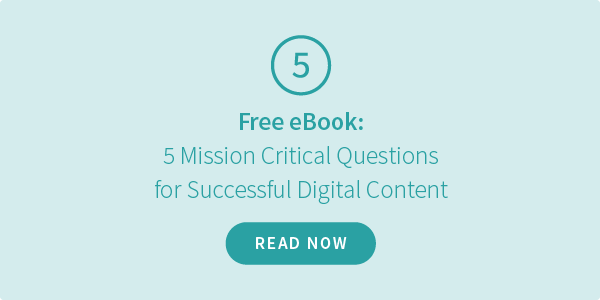The Secret to Training ‘Google First, Ask Questions Later’ Employees
When an unanswered question comes up at the dinner table, it’s not just Millennials who reach for their smartphones. Today, we’re all reliant on Google. And we’ve seen this habit carry over into our professional lives, too: instead of carefully curating files into logical folders or tagging emails for follow up, we’ve ditched meticulous organization for powerful search engines. We know that search is faster, easier, and more dependable than anything else.
So how does this affect your corporate training and reference program? It adds a new challenge: making content more attractive to employees than the ease of a Google search. As it stands, your employees likely type their questions into a search bar more often than they open up your LMS or corporate intranet. And while there’s not necessarily anything wrong with this, there’s probably a lot more that’s right with the content that you’ve carefully curated for your employees.
With that said, here are a few thoughts about how you can make your content more attractive to your employees than Google’s search results:
1. Create your content in HTML5.
Content authored in the web’s own language has a greater likelihood of meeting—or exceeding—the experience that Google can offer. By embedding videos, infographics and other interactive elements in your content, you’ll not only give your users variety, but it’ll be all in the same place. Imagine this: a definition of a technology term, paired with an audio recording of how it’s pronounced, along with a video of best practices for using that technology, all on one page. That’s at least 3 clicks in the land of the search engine.
2. Make your content searchable.
Pair your content with a sophisticated search experience, presenting results quickly and in context. If your search results show the user where the search term is found in the content, they can more quickly click to exactly the right instance for their situation. It’s the opposite of choosing “I’m feeling lucky.”
3. Make access easy.
If your content is responsive and displays as well on a smartphone or tablet as it does on a desktop, employees always have that content within reach. Native apps and SSO make it as easy to open your content and search for the right answer as it is to open up Google. The fact is, if your content is handy on any device, it’s also probably handy at any moment.
4. Deliver the right information at the right time.
When do your employees open up that search? Is it when they are in the field, on the phone, or about to open up that machine? Since you know what your employees are doing and when, you can be smarter than Google. With this knowledge, you can make sure that they have the information they need in the moment, which brings more value than sheer ease of use alone.
5. Prove to your employees that your content helps them succeed.
Even with all of these added benefits, your employees probably aren’t going to stop Google-ing overnight. As we know, habits are hard to break. However, if your content is so pertinent, engaging, and easy to find that your employees are incentivized to use it again and again, soon they will have new habits when it comes to on-the-job research. Without the extra clicks, wrong turns, and extraneous information that a Google search can lead to, employees will quickly learn how valuable your content is.
Better yet, with content analytics, you can prove that your employees find your content helpful in the same way that Google offers Google Analytics. Set particular success metrics, such as pages read or unique visitors, and hold your content to high standards. If a particular topic isn’t getting the attention you think it deserves, check in with your employees to see how you can make your content—and their experience—better.
The bottom line:
As the amount of available data on the Internet continues to grow, it’s unlikely that your employees will be giving up Google anytime soon. However, with an HTML-powered authoring platform that’s based in the cloud, it’s possible to create content that imitates Google—and even surpasses it. By following the above suggestions, we’re confident that your content, and not the Wild West of the open internet, will be your employees’ first stop on the way to knowledgable success.

